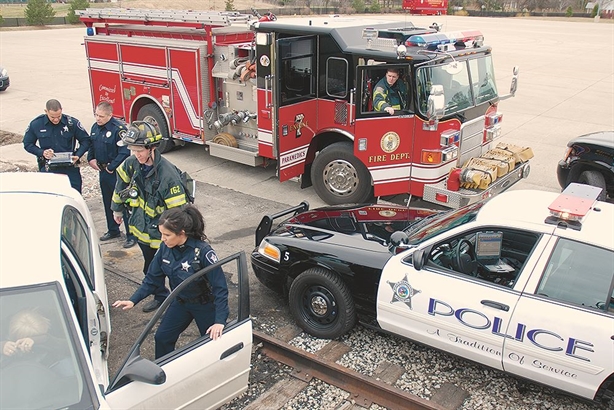A New Look at Community Safety
February 03, 2020 by Meredith Trimble

Perhaps the most recognized service that governments provide to communities is safety. Properly funding public safety departments such as police and fire is important. But what about ensuring the safety of the responders themselves? Beyond budget season, how can governments make sure both residents and responders are supported and safe?
Mobile Apps
In Indianapolis, Indiana, questions after a tire warehouse fire prompted the fire department to seek a better way to handle inspections. The department ultimately moved from a manual, pencil-and-paper based process to a software suite of applications that facilitate field inspections and make inspection information available to firefighters.
The mobile-centric inspection app facilitates workflow electronically for inspections of existing structures and new construction. The app gives inspectors and fire marshals accurate information in the field including prior inspection history, references to the current fire code, and any updates such as occupancy or change in ownership. When violations are found and entered, the app triggers a re-inspection reminder after 30 days.
Indianapolis’ new software not only collects and shares information from inspectors, it allows fire alarm and security system contractors to report their data through a contractor portal, giving responders as complete a picture as possible of the jurisdiction’s buildings for real-time risk management and situational awareness.
The information also flows back into the city’s permitting software as well as into the police department’s records dispatch software. That way, when a police officer is dispatched to a scene, he or she has detailed information including the presence of gates, security systems, or hazardous materials.
Read more at FireRescue1.com.
AI
Using cloud-based artificial intelligence can help public safety departments assess risk potential, track remediation, and avoid escalation. The Detroit Police Department provides a good example.
After two federal consent decrees around excessive force, illegal arrests, and improper detention, the Detroit PD sought to strengthen officer performance as well as community trust. Working with a local entrepreneur, the city digitized police records and developed a system for the PD to identify, manage, and mitigate instances of officer misconduct. The resulting software – ArxAlert, now available to other jurisdictions – helps agencies proactively monitor and identify risks, preventing incidents and resultant lawsuits. Using cloud-based artificial intelligence, the software identifies when an officer has been exposed to or is exhibiting potential for risk, then guides supervisors through an intervention process to proactively address the situation.
Customized dashboards allow supervisors to see all reporting officers and potential risks, which can support resource allocation requests. The software digitally manages, tracks, and documents corrective action, which also protects the agency against litigation.
Read more at PoliceOne.com.
Dispatch
For police, in particular, risk to officers increases when they leave their vehicle and are no longer tied to dispatch. Modern mobile apps can solve this problem by extending dispatch functionality onto a smartphone, tablet, or watch in order for a dispatcher to track an officer as they move. The app can trigger an emergency beacon if it recognizes an officer is in a foot chase and allows command staff to view real-time positioning of all units and personnel. During a large-scale incident, this is especially helpful in determining the extent of back-up needed.
Additionally, these apps provide critical information to officers in the field to enhance situational awareness even when they are away from their vehicles.
Read more at PoliceOne.com.